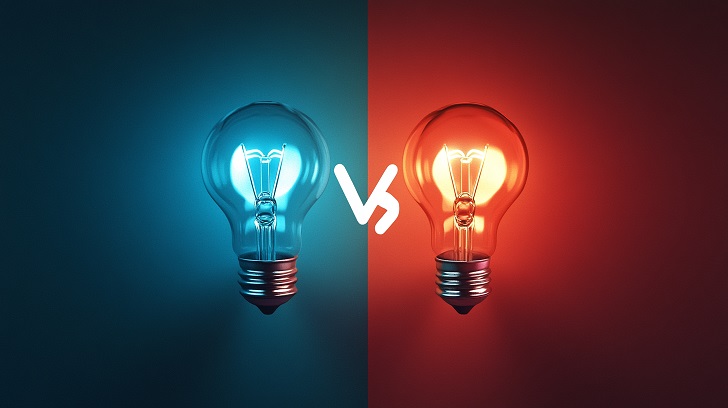In the high-stakes arena of startup development, every aspiring entrepreneur must confront the crucial decision of how to best introduce their product into the marketplace. There is a fine line between a product that’s too embryonic, leaving potential users puzzled, and one that’s over-engineered, burning through precious resources. This is where the strategies of creating a Minimum Viable Product (MVP) and a Minimum Marketable Product (MMP) come into sharp focus.
Understanding the nuances between these two approaches — and when to employ each — is pivotal for any startup wanting to make a calculated entry into the market, validate its business idea effectively, and scale up with precision. So, let’s delve into the intricacies of both concepts and offer guidance on navigating the path from MVP to MMP.
The Minimum Viable Product
The term MVP has been echoing through the halls of the startup world ever since Eric Ries popularized it with his Lean Startup methodology. An MVP is the most basic version of a product that can be released to early adopters. The goal here is to test hypotheses about the market’s needs and desires with the least effort and resources, thus limiting risk and potential losses.
According to a report by CB Insights, 42% of startups fail due to the lack of market demand. This statistic underscores the importance of MVP testing early on in product development. The functionality included in an MVP should be just enough to solve a core problem for your target audience and provide initial value, while also laying a foundation for future development based on user feedback.
The Minimum Marketable Product
When talking about an MMP, we refer to a product iteration that contains the minimum features necessary not just for functionality, but also for market appeal and user satisfaction. The MMP takes the learning derived from the MVP and incarnates it into a product that’s polished enough for a broader market release.
An MMP should be seen as a significant progression from the MVP. While it still isn’t the complete product vision, it’s designed to offer a reliable, usable, and delightful experience that can generate sustainable sales. A well-crafted MMP strikes the balance between feature breadth and feature depth*, ensuring that each element of the product not only works but works well enough to satisfy and retain users.
Consider the study by Gartner which finds that 15% of users will abandon a product if it doesn’t meet expectations, pointing to the criticality of the MMP phase. An MMP must have enough features and quality to convince users of its value and establish a reputable brand presence.
From MVP to MMP
The journey from MVP to MMP isn’t simply about adding more features; it’s a strategic process of learning, validating, and refining. It involves key stages:
- Gathering and interpreting user feedback: Your MVP is your initial conversation with your first users. Use their insight to guide development and prioritize features that resonate with them.
- Iterative improvement: Incremental additions and tweaks to the MVP gradually transform it into an MMP. Each iteration should be guided by user demand and business strategy, not by assumptions of what users might want.
- Maintaining quality and usability: Scalability is not just about size; it’s about maintaining high performance and a good user experience as more features are introduced. A single bug can jeopardize a user’s trust.
- Market readiness: Before your product transitions to MMP, ensure that it not only works technically but is also equipped with the necessary supporting systems, such as customer service and marketing channels, to thrive in the market.
When to Pivot from MVP to MMP
Knowing when to transition from an MVP to an MMP is as much an art as it is a science. Here are signposts that you’re ready for the shift:
- Consistent user base: A growing number of users are reacting positively to your MVP, indicating true market demand.
- Validation of core features: Usage data shows that core features of the MVP are often used and are delivering value.
- Feedback loop establishment: You’ve set a system for capturing, analyzing, and acting on user feedback, leading to product improvements.
- Resource readiness: Adequate resources (capital, team, infrastructure) are in place to scale operations.
- Cleared compliance hurdles: Legal, security, and privacy considerations have been thoroughly addressed, priming the product for a broader audience.
Risks of Early Transition
Moving too hastily from an MVP to an MMP can expose a startup to several risks. These include overshooting the market need, creating feature bloat, and draining resources on non-critical functionalities. There’s also the danger of becoming too attached to the early solutions, limiting the ability to pivot based on feedback.
Conclusion
Both the MVP and the MMP are formidable tools in a startup’s arsenal, each catering to different stages in the product and business lifecycle. Understanding the differences, purposes, and execution of each is essential for sustainable growth and long-term success.
In a dynamic and ever-competitive startup landscape, the mastery of building, testing, and refining products can be the difference-maker. Whether you’re starting with an MVP or advancing towards an MMP, the focus should always remain on providing value, learning from the market, and steadily marching towards a product that resonates deeply with your target users. Armed with this strategy, your startup is well on its way to carving out its place in the market.




